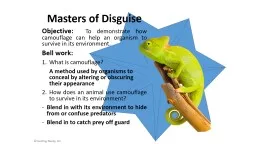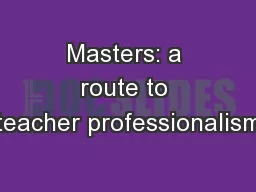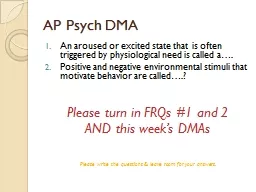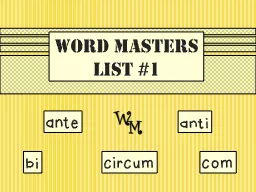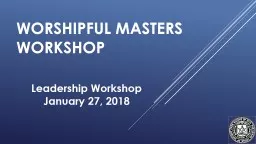PPT-Masters of Disguise
Author : marina-yarberry | Published Date : 2017-09-29
Objective To demonstrate how camouflage can help an organism to survive in its environment Bell work What is camouflage A method used by organisms to conceal by
Presentation Embed Code
Download Presentation
Download Presentation The PPT/PDF document "Masters of Disguise" is the property of its rightful owner. Permission is granted to download and print the materials on this website for personal, non-commercial use only, and to display it on your personal computer provided you do not modify the materials and that you retain all copyright notices contained in the materials. By downloading content from our website, you accept the terms of this agreement.
Masters of Disguise: Transcript
Download Rules Of Document
"Masters of Disguise"The content belongs to its owner. You may download and print it for personal use, without modification, and keep all copyright notices. By downloading, you agree to these terms.
Related Documents

